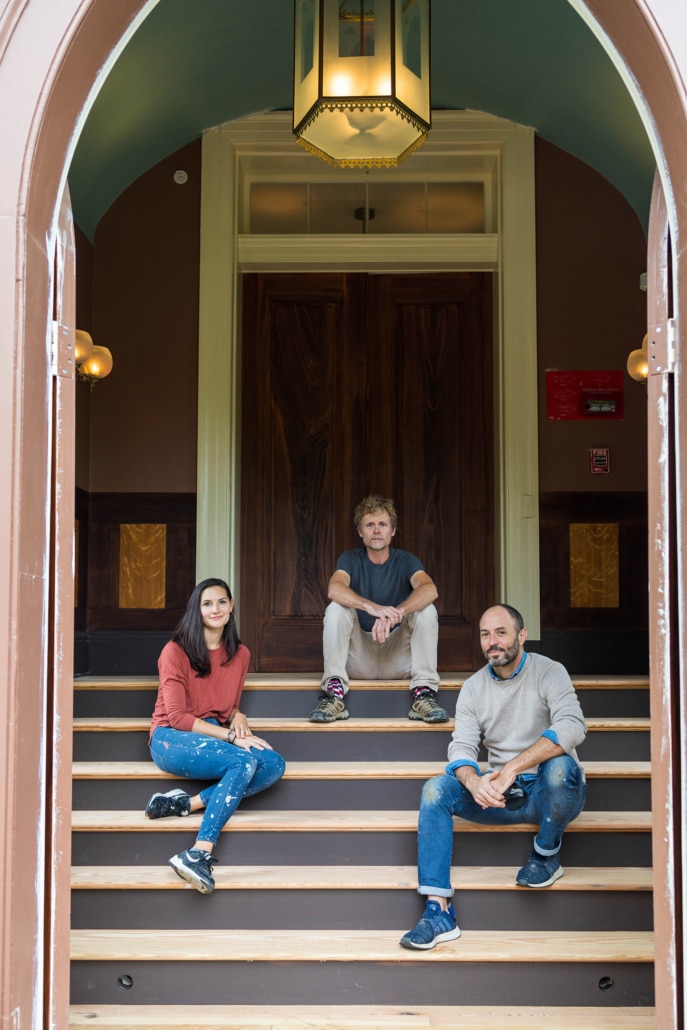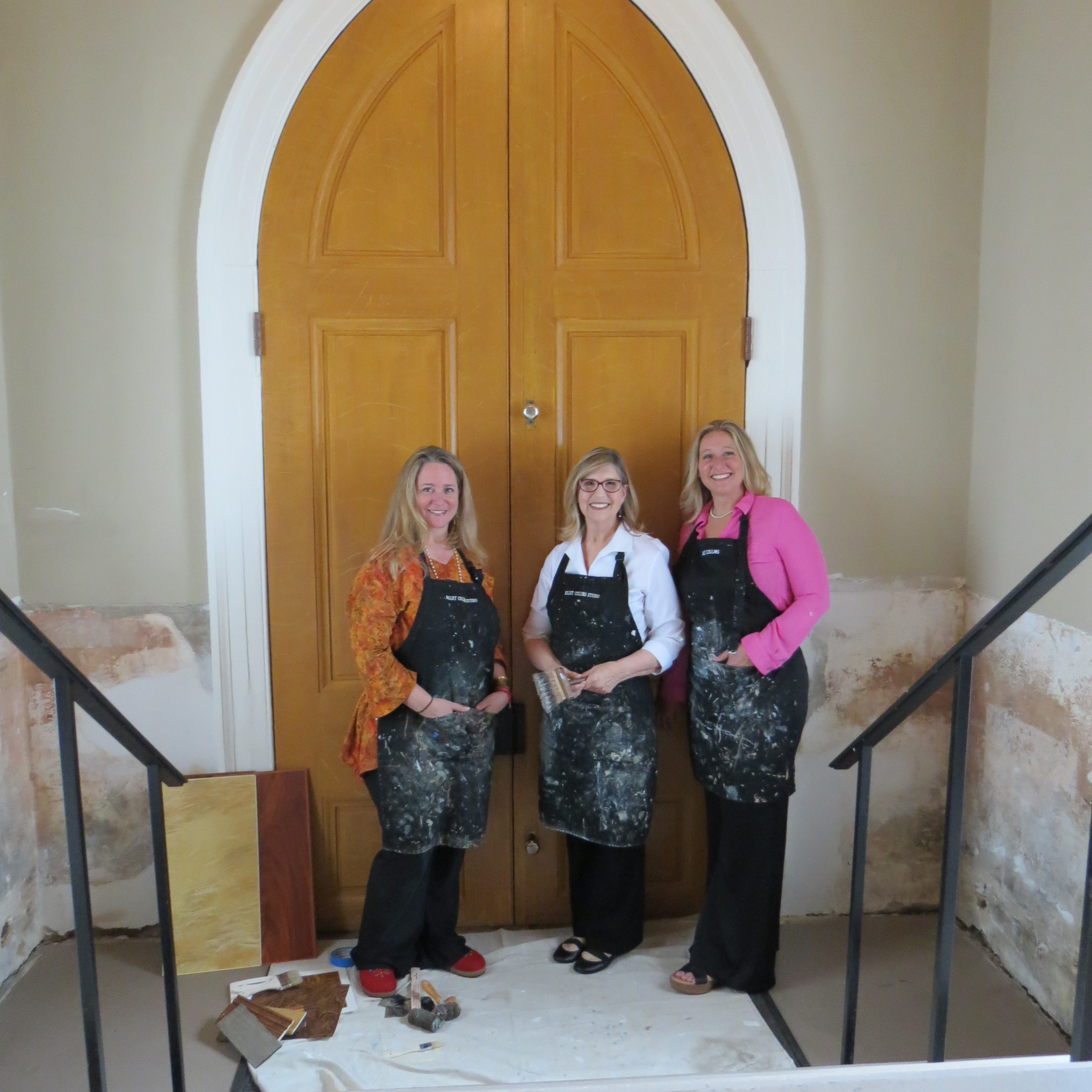
Thanks for your interest in this multifaceted restoration process. Please watch this video or scroll down to read all about it.
The vestibule project was broken down into four parts, which are described below:
- Return historic features to the staircase.
This included the installation of baseboard and other trim and stair components to match the original layout.
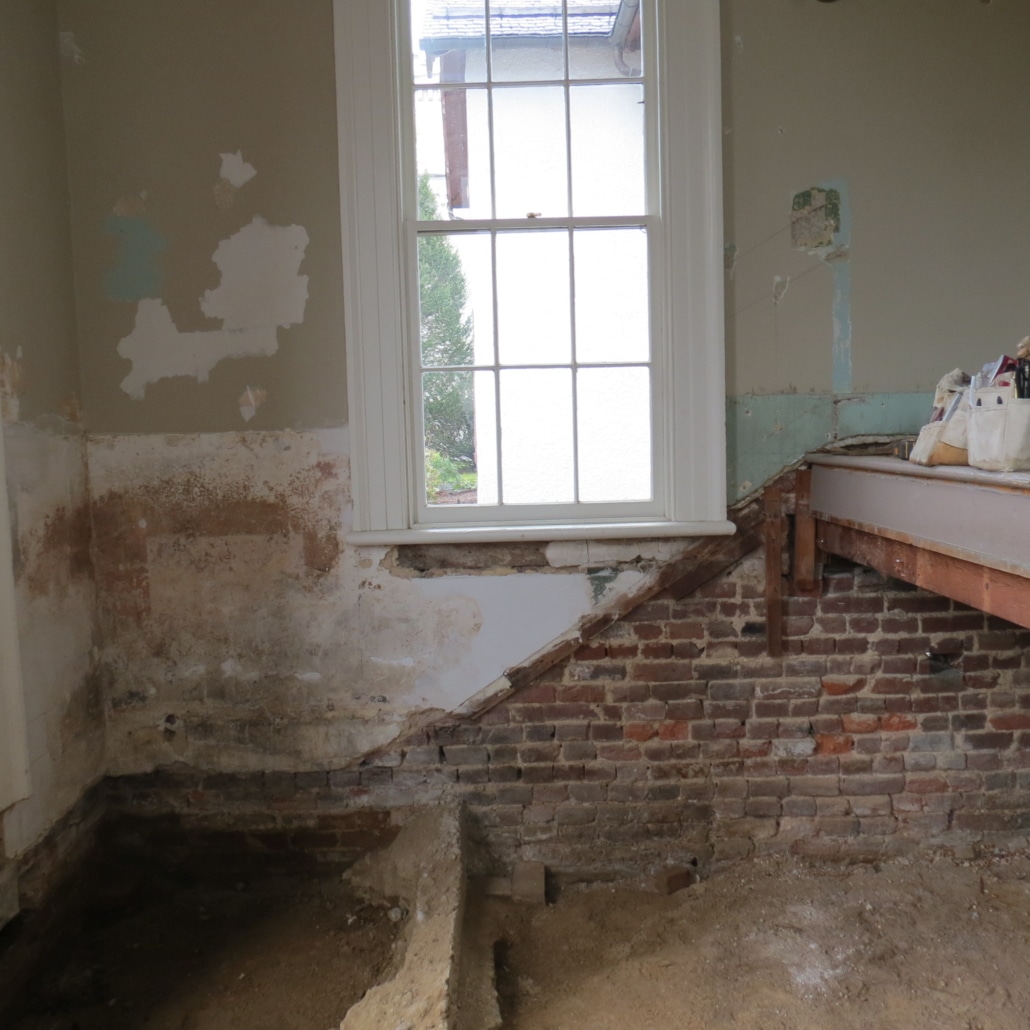
1950’s era staircase and trim removed
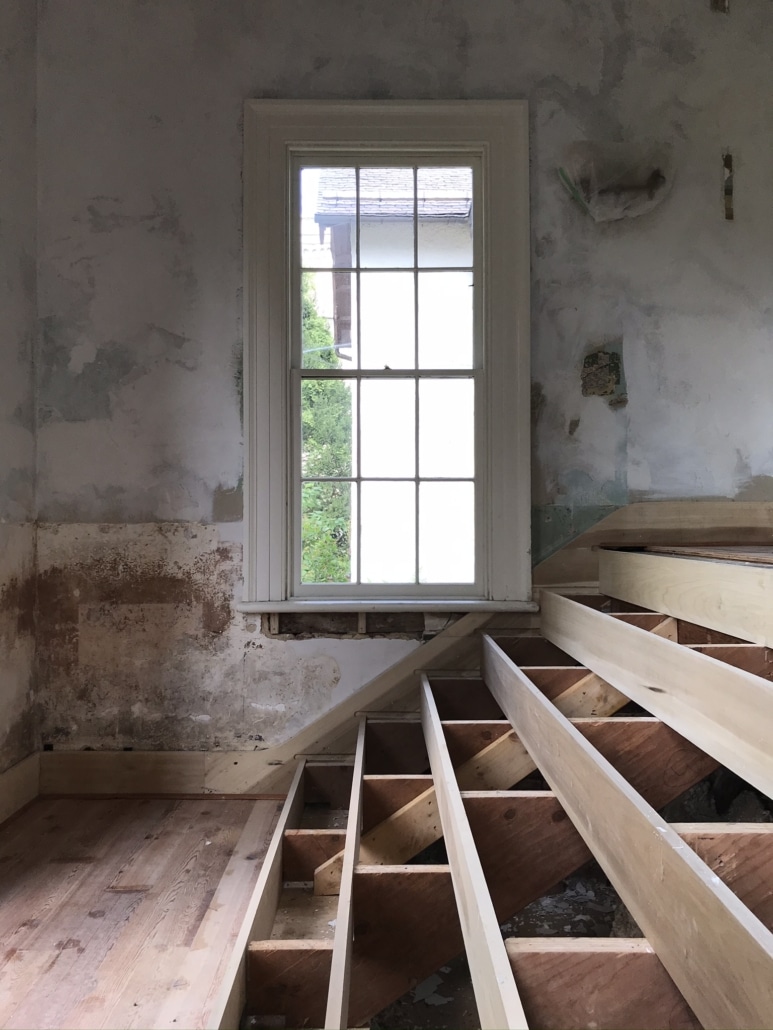
Returning the original staircase features
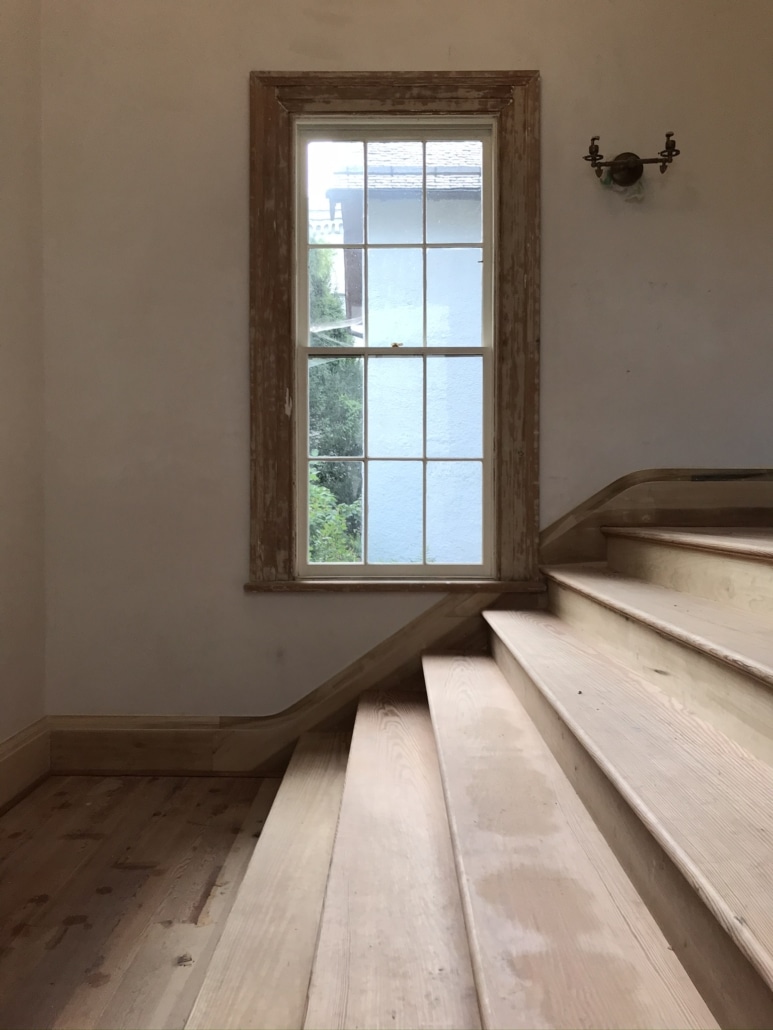
Finish returning original staircase features
- Remove the modern concrete floor at the base of the staircase and determine what material was used for the original floor.
We discovered evidence after the concrete was removed which confirmed that the floor at the base of the stairs was originally a wood floor built on a wood frame.
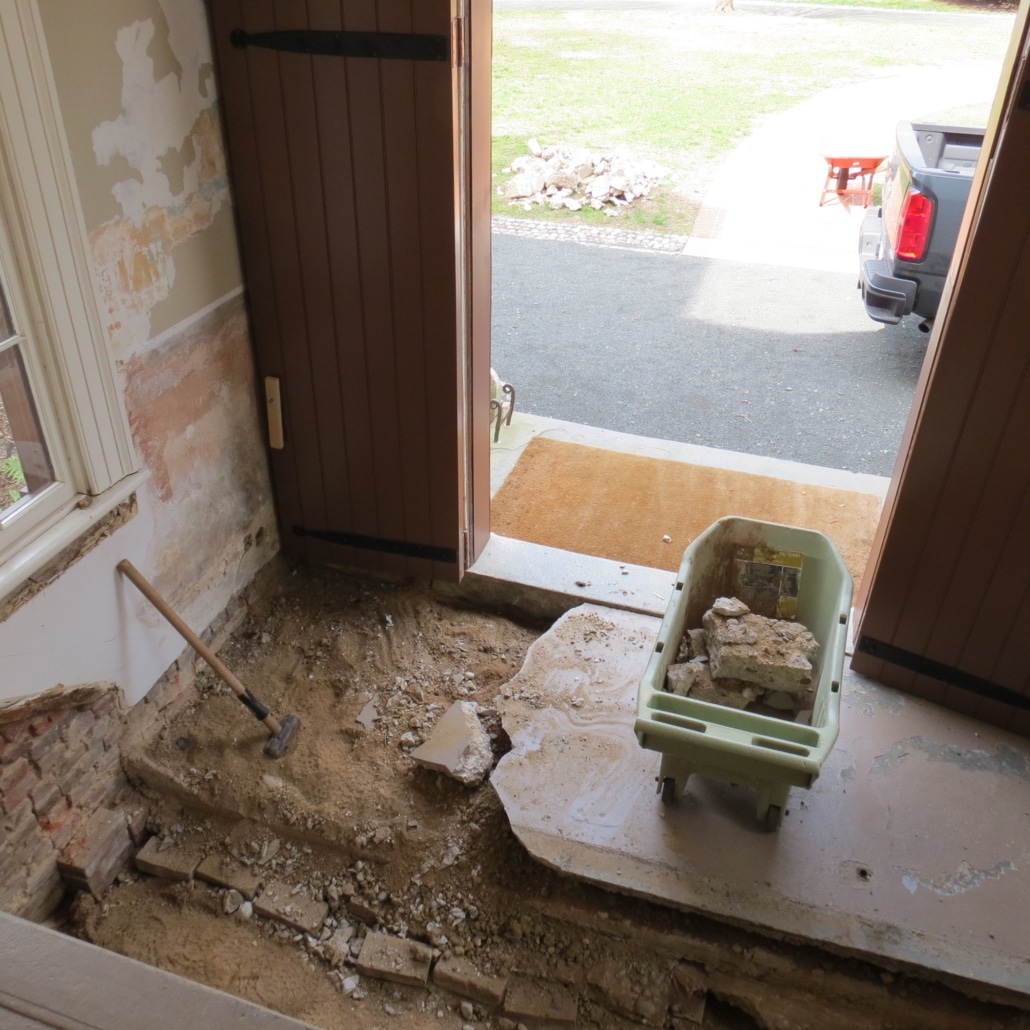
Begin removing concrete floor at the base of the stairs
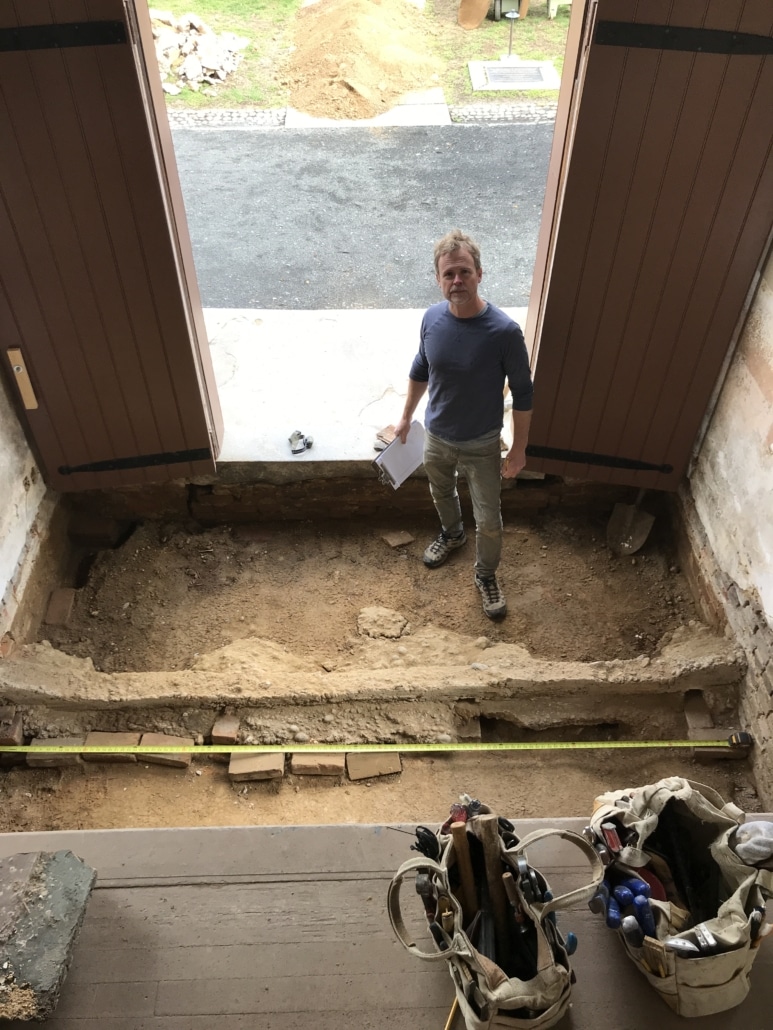
Completed removal of concrete floor at the base of the stairs
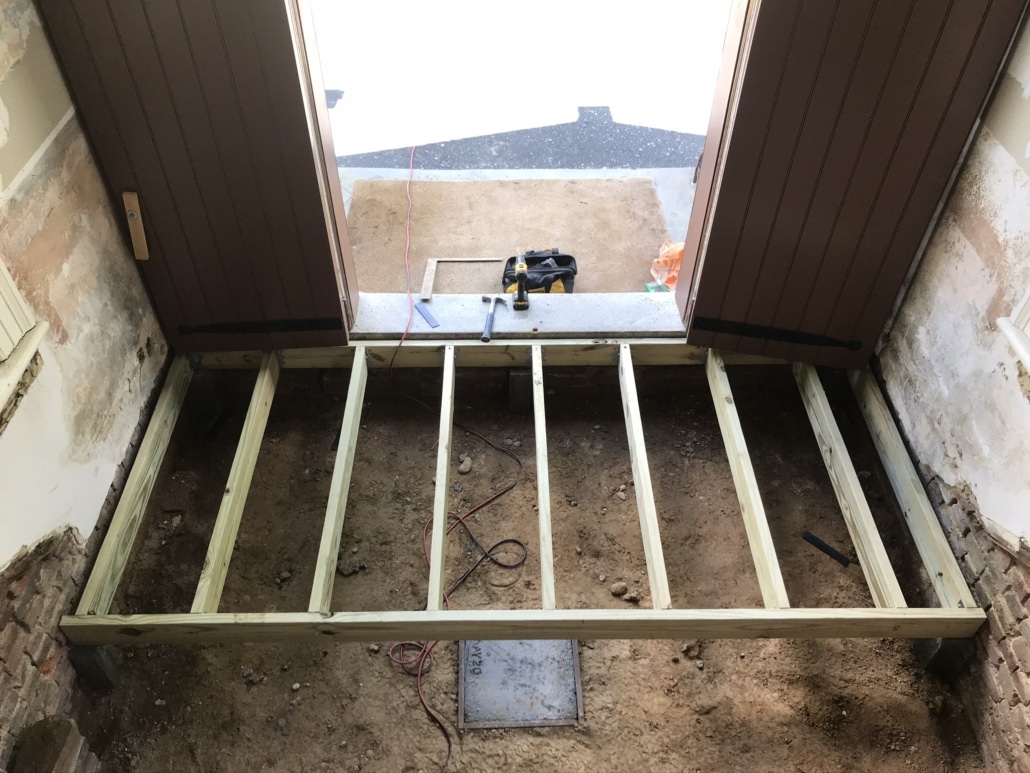
Begin construction of floor framing to accept a wood floor
- Reproduce the decorative painting on the plaster walls.
The discovery of areas of the original faux grained wainscot helped determine the location of the wainscot and the type of wood that was represented. Exposures were also completed to help determine the color of the ceiling and the wall above the wainscot.
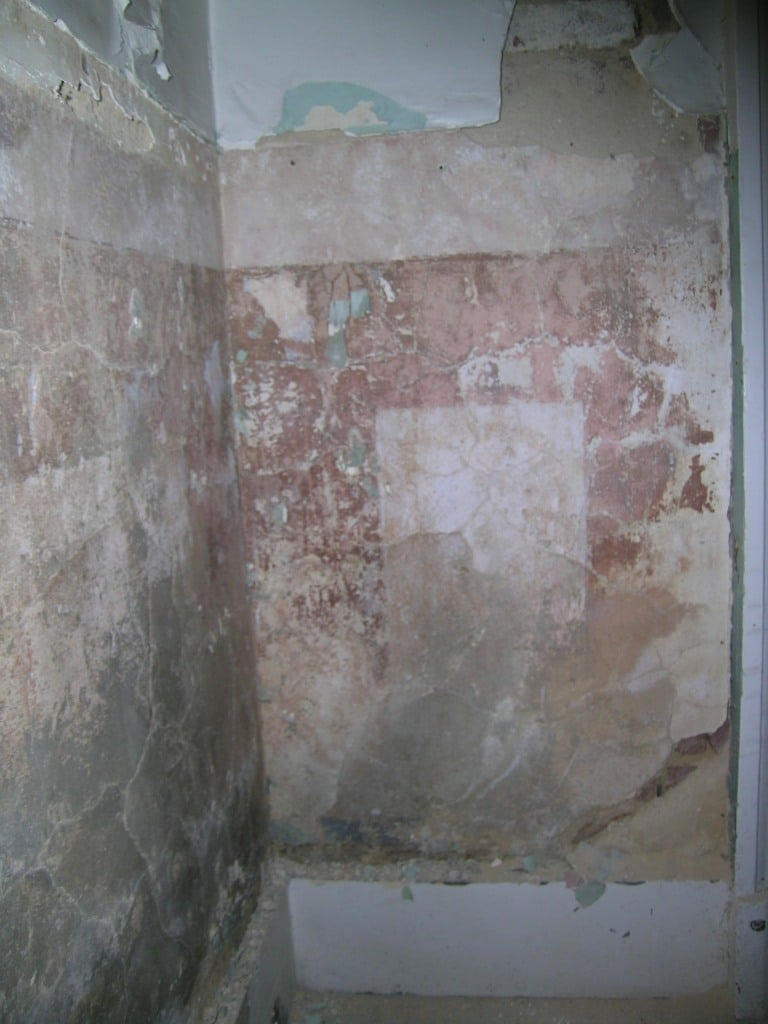
Original wainscot revealed.
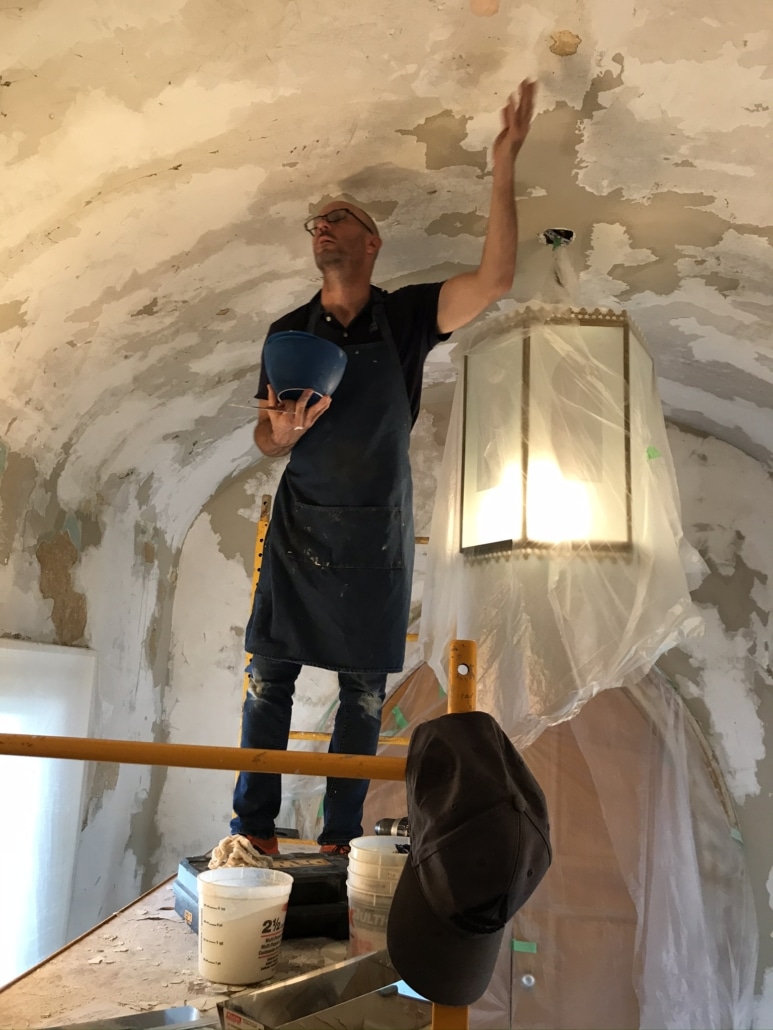
Plaster repairs to walls and ceiling
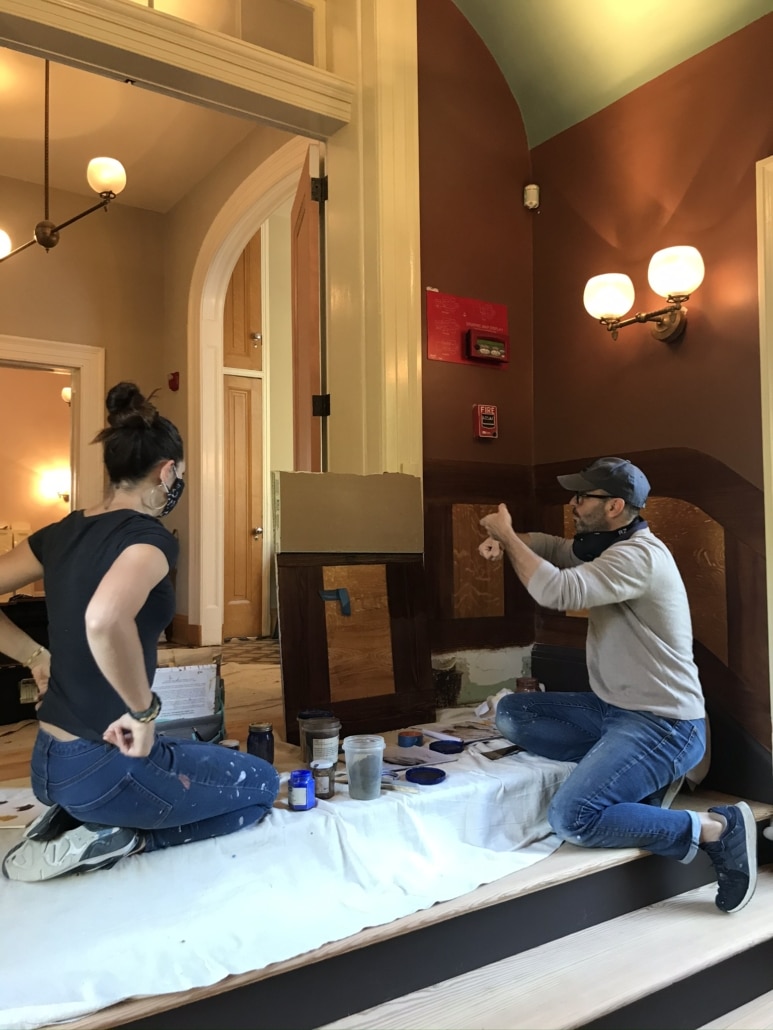
Reproduction of decorative painting
- Return the entry hall doors to their original swing.
The staircase was reconfigured in the 1950s, and the entry hall doors were moved so they would swing into the vestibule. During the vestibule restoration, the doors were returned to their original location and swing. This included restoration of the transom bar (the trim above the door) to its original location and appearance.
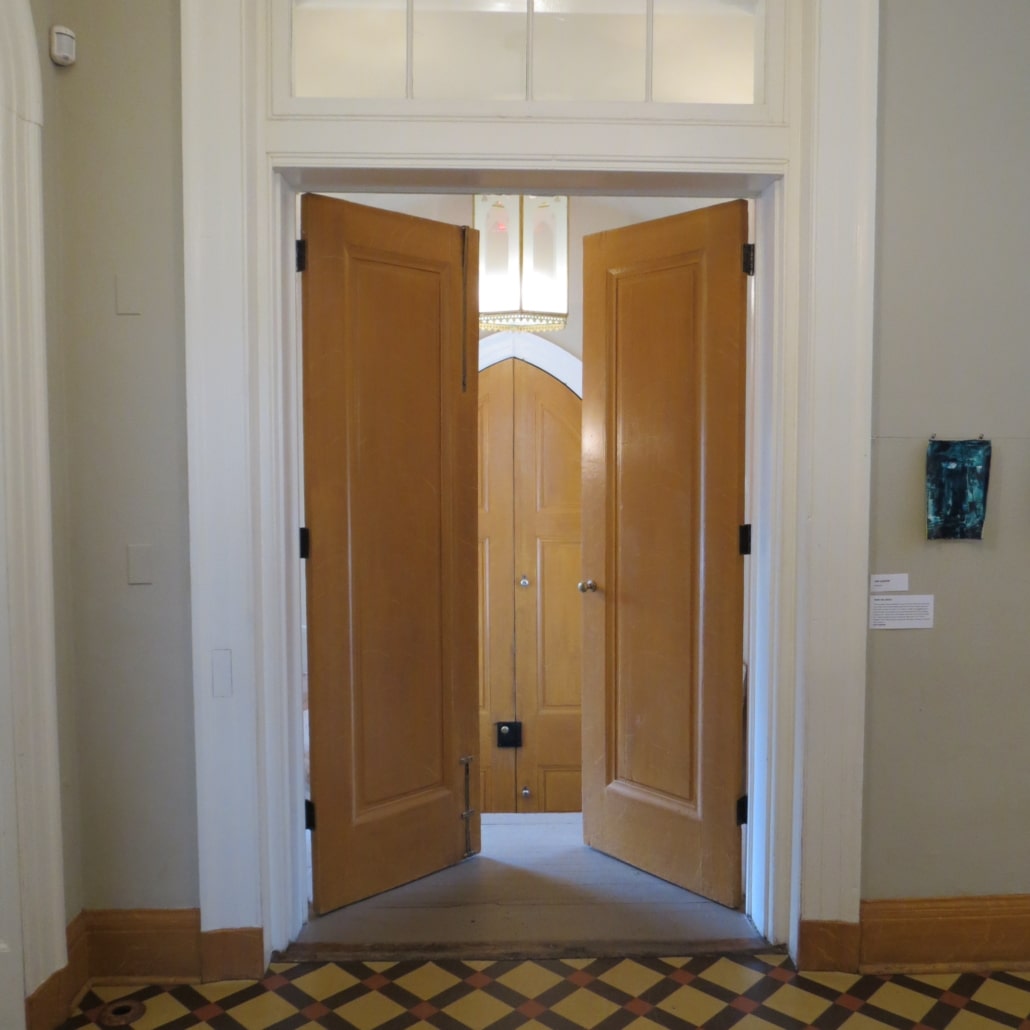
Entry hall doors with their 1950’s swing into the vestibule
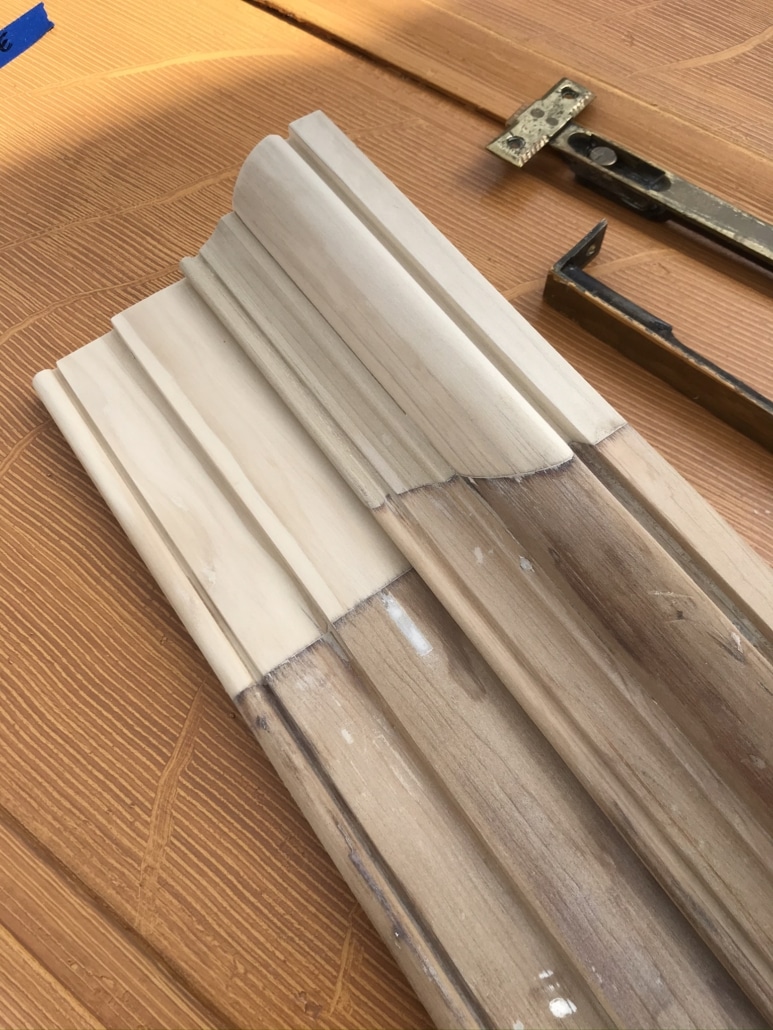
Restoration of the original transom bar
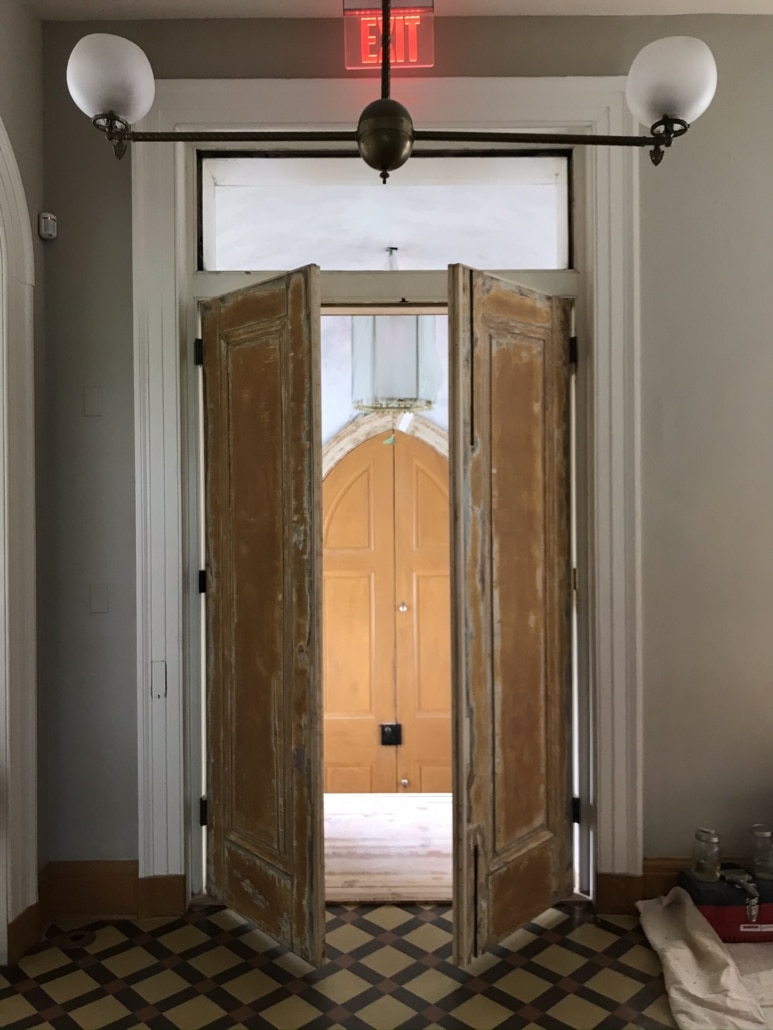
Entry hall doors returned to their original swing into the entry hall
After all four phases were complete, the vestibule looked like this, and we sat down and took a break.
